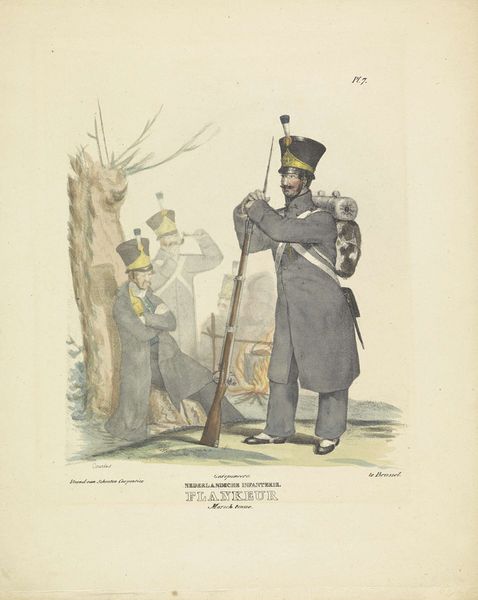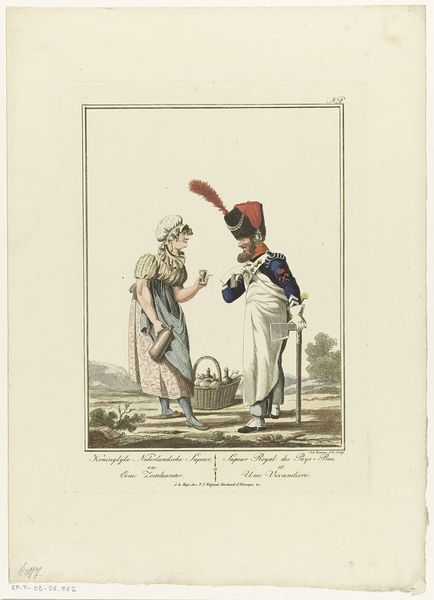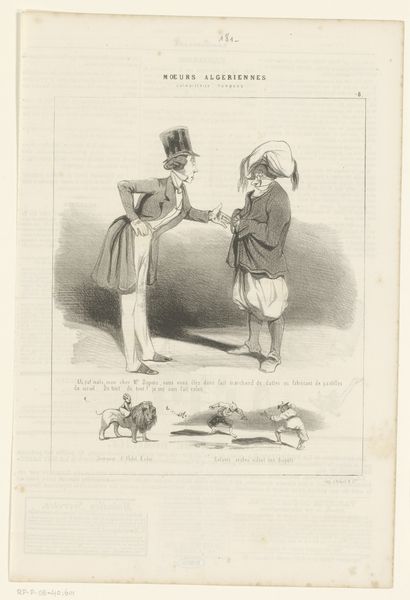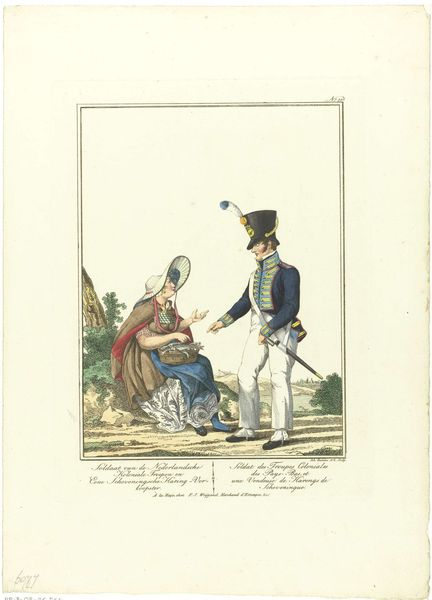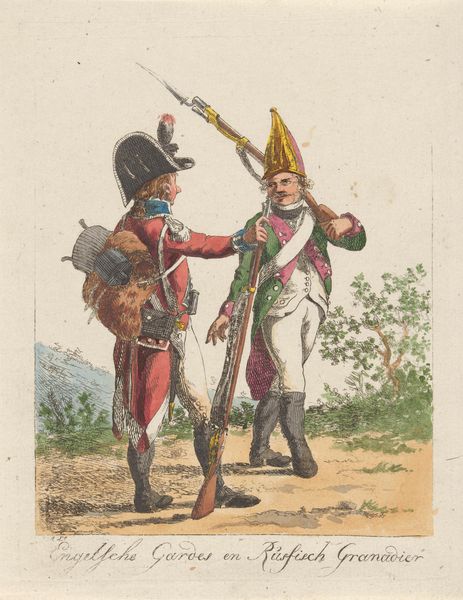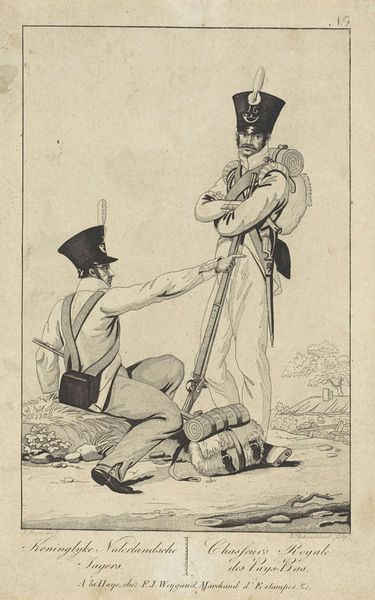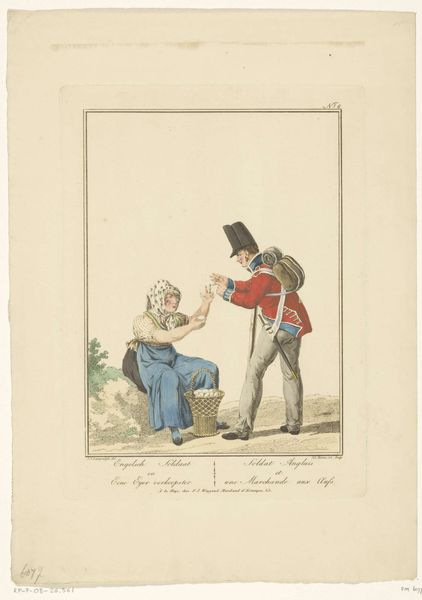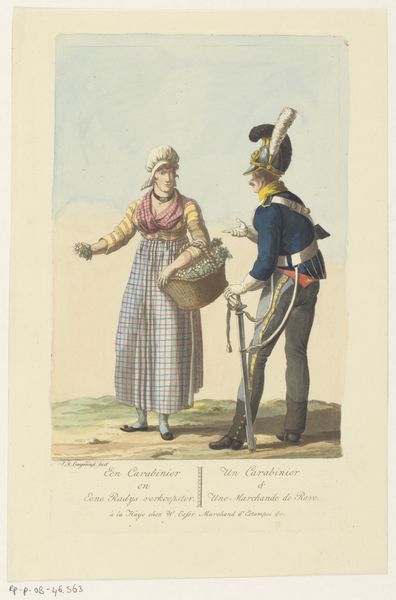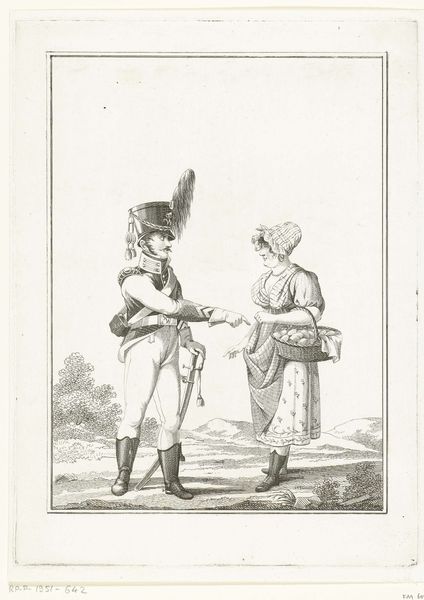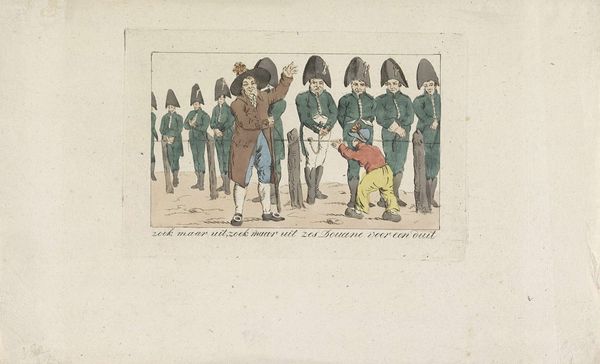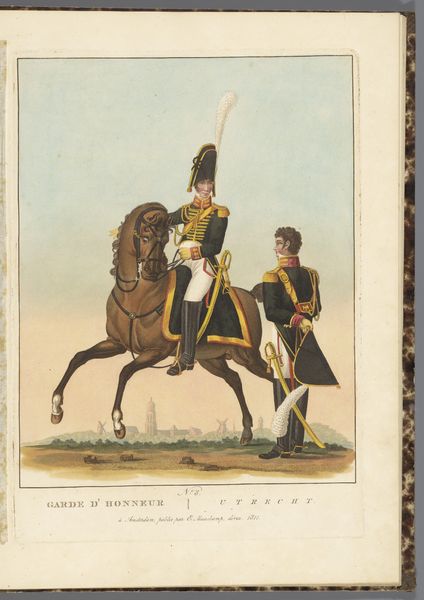
drawing, print, watercolor
#
portrait
#
drawing
# print
#
figuration
#
watercolor
#
romanticism
#
watercolour illustration
#
genre-painting
#
history-painting
Dimensions: height 267 mm, width 193 mm
Copyright: Rijks Museum: Open Domain
Editor: This watercolor print from between 1814 and 1818, titled "Twee jagers," by Leonardus Schweickhardt, presents two uniformed figures. There's a rather detached feel to their interaction, a formality in the arrangement. What do you see when you examine its composition? Curator: Primarily, I see a study in contrasts and the semiotics of military representation. Consider how Schweickhardt has positioned the figures. One is seated, pointing outward, creating a sense of dynamic tension, while the other stands rigidly, arms crossed, embodying a stillness. Notice the colors: the crisp white trousers against the muted greens and greys of their jackets and the landscape. These choices articulate a hierarchy, perhaps reflective of military structure, but also offer visual interest through contrast. Editor: So, you are looking at the structure itself to understand the piece. It does strike me how the lines of the rifles lead your eye in different directions, almost competing for attention. Curator: Precisely! The lines create visual pathways, inviting the viewer to navigate the scene and contemplate the relationship between the figures. The arrangement isn't arbitrary. The artist utilizes diagonal lines and intersecting planes, constructing a balanced yet subtly unsettling composition. And observe the use of watercolor itself; the artist has meticulously rendered the details of the uniforms, almost fetishistically highlighting texture. Editor: That's fascinating. I hadn’t considered the balance within the 'unease'. Thanks! Curator: Indeed. Hopefully, this examination prompts deeper reflection upon the mechanics of visual language and its potential for communicating diverse interpretations.
Comments
No comments
Be the first to comment and join the conversation on the ultimate creative platform.
